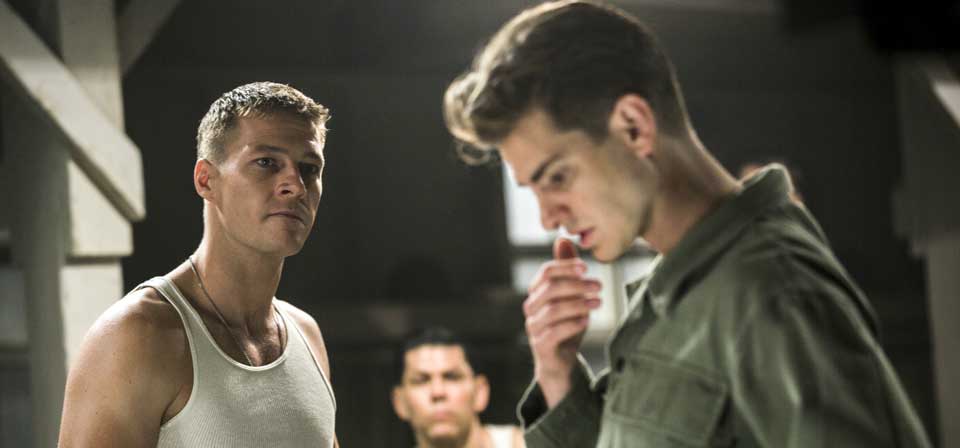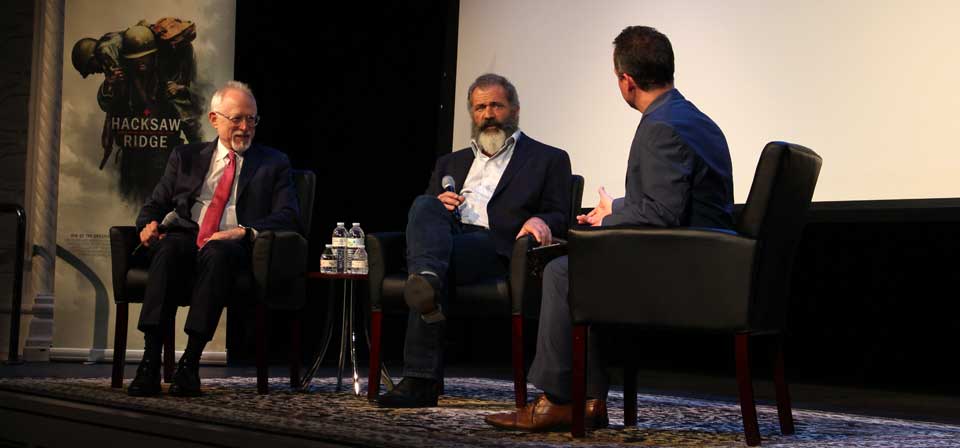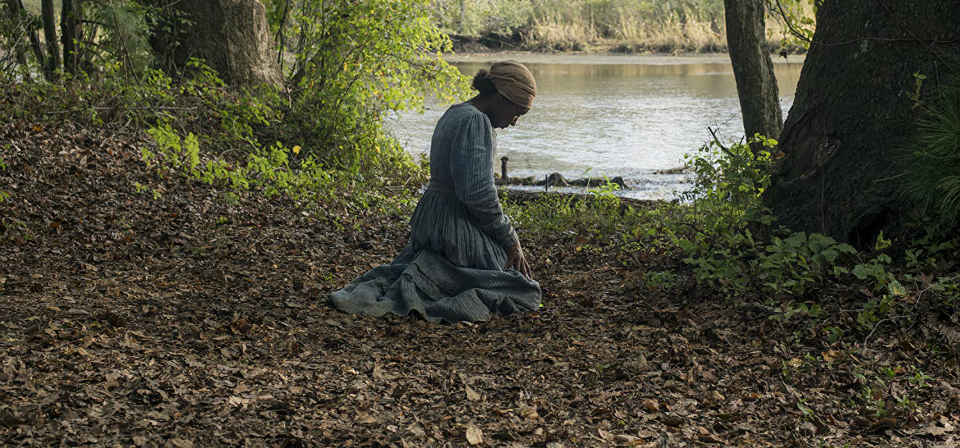Search Results
103 records found
Habemus Papam?
Do we have a pope? Do we even have a movie?

Hacksaw Ridge (2016)
Gibson crafts a resolutely traditional exercise in Hollywood mythmaking: a tale of a man who stoically endures accusations of cowardice before being vindicated as the bravest of all, a man of integrity who stands by his unpopular principles regardless of the consequences; a pious man whose sincere faith eventually wins the respect and admiration of his less devout comrades.

Hacksaw Ridge: Mel Gibson and Robert Schenkkan at the Sheen Center
The director and screenwriter spoke at a screening of the film at the New York Archdiocese’s cultural center, and I chatted with Gibson about the film.
Half Past Dead (2002)
Segal and Rule play convicts sent to Alcatraz by an FBI agent (Claudia Christian) following a chop-shop raid. For no plot-related reason at all, Segal is caught in crossfire during the raid and flatlines for what we are later told is 22 minutes, though it seems mere seconds at the time.
Hannibal (2001)
As directed by Ridley Scott (Gladiator), Hannibal is stylishly mounted and has its entertaining moments. Ultimately, though, it’s like most horror movies: repellent where it should have been frightening, and, in the end, uninvolving and hollow. So many characters suffer such ghastly things, yet none of it seems to matter much.
Happily N’Ever After (2007)
Ella’s so blindly devoted to the Prince, and so convinced that he’s the one to save the day, that she seems just another swooning groupie rather than a worthy heroine. If she hasn’t any more sense than that, what exactly does Rick see in her? What does that say about him?
Happy Feet (2006)
No, it wouldn’t be entirely accurate to call the CGI cartoon Happy Feet an effort to claim penguins for the other side of the culture wars. But it wouldn’t be wholly wrong either.
Happy Feet Two (2011)
Little ones are “tougher than we think,” a penguin remarks in Happy Feet Two, and you can tell director George Miller believes it. The animated sequel pulls few punches: It’s overshadowed by more darkness, menace, heartache and anxiety than any talking-animal picture I can think of since, well, Miller’s last family-film sequel, the execrable Babe: Pig in the City. Neither the classic Babe nor the original Happy Feet contained any hint of the darkness of the sequels. Apparently Miller’s strategy is to soften kids up first, then drop the bomb.
Happy New Year!
2010 was a good year for Decent Films, though there’s room for improvement in 2011.
The Harold Lloyd Comedy Collection
For fans of silent comedy, it’s the DVD event of the decade: Harold Lloyd, the “Third Genius” of silent comedy (Chaplin and Keaton being the other two), until now almost totally unavailable on DVD, at last enters the modern home-video age in grand style with the The Harold Lloyd Comedy Collection.

Harriet (2019)
The strongest scene in Kasi Lemmons’ Harriet might be a moment when its indomitable protagonist appears at her weakest.
Harry Potter & the Deathly Hallows: Part 1 [video] (A Review in Verse)
Here’s my 30-second rhyming review of Harry Potter & the Deathly Hallows: Part 1.
Harry Potter and the Chamber of Secrets (2002)
Harry Potter is back, and in this second outing the stakes are higher, the themes darker, the Malfoys nastier, the action grander, the monsters scarier, the gross-outs ickier, the climax stronger, and the movie longer.
Harry Potter and the Deathly Hallows: Part 1 (2010)
The seventh Harry Potter movie, based on the seventh and final book, is here at last, yet the saga is not over. Extending their biggest cash cow of the millennium into next year, Warner Bros. has split Harry Potter and the Deathly Hallows in two, with Part 2 coming next year, almost a full decade after the series started.
Harry Potter and the Deathly Hallows: Part 2 (2011)
Here at last, in the final chapter, the Harry Potter franchise rouses itself toward something approaching greatness.
Harry Potter and the Goblet of Fire (2005)
The fourth of seven projected films based on J. K. Rowling’s ongoing adventures of the boy wizard, Harry Potter and the Goblet of Fire represents the midpoint of the series and of Harry’s schooling at Hogwarts School of Wizardry and Witchcraft.
Harry Potter and the Half-Blood Prince (2009)
Potter fans, whether they’ve kept up with the books or not, will find that the latest film continues the trajectories of recent installments — it’s darker, more tragic and more romantic — while setting the stage for the final battle, now planned for two movies.
Harry Potter and the Order of the Phoenix (2007)
The level of magical eye candy is noticeably lower than previous installments… On the other hand, Ron and Hermione, though probably short-changed compared to the book, are better used here than in the previous film. Best of all is Harry’s leading role in Dumbledore’s Army, marking a major advance in proactive engagement from a protagonist who for too much of the first four chapters has been largely passive.
Harry Potter and the Prisoner of Azkaban (2004)
Where its predecessors felt a bit padded and overlong, The Prisoner of Azkaban feels incomplete and overly edited. If the first two films could easily have been tightened up by a half-hour or so, this one left me wishing for the first time that there were an “extended edition” DVD coming, as with the Lord of the Rings films.
Harry Potter and the Sorcerer’s Stone (2001)
Fans of the books will be gratified by a warm rush of recognition at every turn. From the growing anticipation as the mysterious invitations to Harry at the Dursley’s begin their inexorable multiplication, to Robbie Coltrane’s comforting performance as the genial giant Hagrid, to the dazzling Hogwarts grounds, to the exhilarating speed and excitement of Quidditch, the book’s main pleasures have been expertly realized.
Recent
- Benoit Blanc goes to church: Mysteries and faith in Wake Up Dead Man
- Are there too many Jesus movies?
- Antidote to the digital revolution: Carlo Acutis: Roadmap to Reality
- “Not I, But God”: Interview with Carlo Acutis: Roadmap to Reality director Tim Moriarty
- Gunn’s Superman is silly and sincere, and that’s good. It could be smarter.
Home Video
Copyright © 2000– Steven D. Greydanus. All rights reserved.